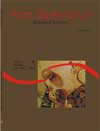<b>Acute toxicity and histopathologic effects of diquat herbicide on the gill and liver of nile tilapia (<em>Oreochromis niloticus</em>)</b>
Abstract
The lethal concentration of 50% (LC (I) 50-96h) and the histopathologic effects of diquat herbicide on Nile tilapia (Oreochromis niloticus) fish were evaluated in three experiments. The fishes were exposed to concentrations of 0, 25, 30, 35, 40, 45, 50, 55 and 60 mg diquat L-1, and gill and liver histology were evaluated in the surviving fishes. The estimated LC (I) (50-96h) of diquat was 37.28 mg L-1, with lower limits of 33.12 mg L-1 and upper limits of 41.44 mg L-1. In the treatment with 30, 35 and 40 mg L-1, signs of apical fusion of the secondary lamellae were observed; with 45 and 50 mg L-1, congestion of the primary lamellae was observed; in the treatment with 55 mg L-1, congestion of blood vessels on secondary lamellae took place. The livers of fishes in treatments with 0, 25, 30 and 35 mg L-1 showed cordonal organization of hepatocytes. In the treatments with 40 and 45 mg L-1, hypertrophy of hepatocytes took place; with 50 and 55 mg L-1, cell fusion and the presence of vacuoles inside hepatocytes were observed. Diquat presented low risk of toxicity for Nile tilapia, as the more severe histopathologic alterations occurred only in higher concentrationsDownloads
Download data is not yet available.
Published
2008-03-28
How to Cite
Henares, M. N. P., Cruz, C. da, Gomes, G. R., Pitelli, R. A., & Machado, M. R. F. (2008). <b>Acute toxicity and histopathologic effects of diquat herbicide on the gill and liver of nile tilapia (<em>Oreochromis niloticus</em>)</b>. Acta Scientiarum. Biological Sciences, 30(1), 77-82. https://doi.org/10.4025/actascibiolsci.v30i1.1462
Issue
Section
Animal Physiology
DECLARATION OF ORIGINALITY AND COPYRIGHTS
I Declare that current article is original and has not been submitted for publication, in part or in whole, to any other national or international journal.
The copyrights belong exclusively to the authors. Published content is licensed under Creative Commons Attribution 4.0 (CC BY 4.0) guidelines, which allows sharing (copy and distribution of the material in any medium or format) and adaptation (remix, transform, and build upon the material) for any purpose, even commercially, under the terms of attribution.
Read this link for further information on how to use CC BY 4.0 properly.
0.6
2019CiteScore
31st percentile
Powered by 

0.6
2019CiteScore
31st percentile
Powered by 











1.png)




3.png)













